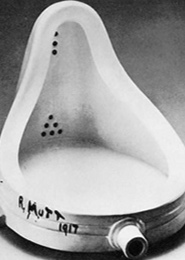
and how can it be used in your marketing campaigns?
These days’ marketers are, more often than not, looking further afield than traditional marketing disciplines in order to gain attention for their product’s promotion. One concept that has grown in popularity recently is that of the use of installation art as a central, or stand alone, aspect of a marketing campaign…which is all very interesting, but just what is installation art?
Installation art was first used as a term in the late 60s and was coined to describe a form of art that, arguably, has been around forever – namely the use of sculptural materials and other forms of media to alter the way we, as viewers, perceive a particular space.
Put more simply, it is a form of art where all the senses are used to create the work as opposed to the sole use of the eyes as with more “traditional” art. As technology has developed installation art has progressed apace with types of media such as video, sound equipment, computers and the internet now freely available and seemingly perfect for an art discipline where the removal of the sensory experience from a neutral, floating point of focus on a gallery wall or the isolation of a pedestal is one of the main aims.
It would be possible to bang on at length about the origins of the art form and its rise to prominence but, for the purposes of this article, there are only a few things you need know to give you a reasonable grounding in the theory of the style…
Firstly, many would trace its ultimate origins back to Marcel Duchamp and, particularly, his 1917 work Fountain – a signed urinal that he submitted to a gallery in an act of provocation and as a comment on the way art is created and perceived (and the changing of art from physical craft to intellectual interpretation). There’s no need here to go into how devastating a statement it was at the time, suffice to say that in 2004 a selection of 500 art professionals canvassed voted it the most influential artwork of the 20th century.
Secondly the work of Kurt Schwitters can be seen as a direct predecessor of installation art. Indeed his Merz objects of the 20s and 30s – pieces created from found objects ranging in size from tiny to very large constructions – later came to be known as installations.
During the 60s conceptual art also left its influence on this art form and, as it settled into a genre in its own right, rather than the work of pioneering artists, its intentions became clear; namely that the only dimensional constraints that were applicable to the viewer were space and time, everything else was open to interpretation. This, in turn, implicated a softening of the line between art and life; if you can step into an installation where does the artwork begin and real life end?
Which brings us to the main question – how can installation art be used in marketing campaigns?
Most importantly, and centrally, is the idea that an installation can allow your potential consumers to fully experience your product. This, as must be obvious, is a powerful tool in marketing. Allowing your consumer to handle what you intend to sell them in surroundings totally controlled by yourself should never be underestimated.
Secondly, research has shown that sight is by no means the most powerful of the senses when it comes to association. In fact, smell and taste are ahead in that category. Therefore the chance for a potential customer to develop a smell or taste that they associate with your brand should not be undervalued. Imagine if every time they smelled a certain scent they immediately thought of your brand? Totally impossible to influence with a traditional ad campaign, yet easily influenced within the bounds of an installation campaign.
Similarly immersing the consumer in your interpretation of the reality that surrounds your product will inevitably influence their perception of that product. As an example; if you are marketing an aftershave or deodorant to a young male audience and your installation is a recreation of a fantastic bachelor pad filled to the brim with leather furniture, gadgets, beer and scantily clad leggy models encouraging your target audience to stay awhile and try a quick spray of the brand in question then they won’t be able to avoid making certain associations between affluence and sexual prowess when they think of your brand. You might very well say that this is exactly the kind of TV advertising that already occurs – but, as we’ve already established, there’s a world of difference between what you see on TV (a medium which we are subconsciously predisposed to think of as “fantasy” and “not real life”) and what you experience in reality.
This example can be taken further to highlight the last, major, point of this article – that of the installation as a talking point in and of itself. We are, as stated, used to seeing set ups as described previously on TV, there’s nothing spectacular or unusual about them. However, we simply don’t see this kind of thing in the middle of a park on a summer’s day, or in the centre of your local shopping centre, or floating by on a barge on the Thames…making periodic moorings to allow the public access of course. By taking such installations out of their traditional space (the advert set on a sound stage) you make them new, interesting, exciting and – importantly – a talking point for passers by, potential consumers, news channels, print media and more.
When used creatively, constructively and carefully installation art and its derivatives can be massively useful in any marketing campaign. Incidentally, it’s something we at Hotcow are very good at!
